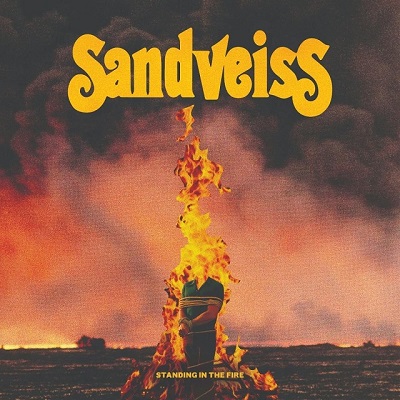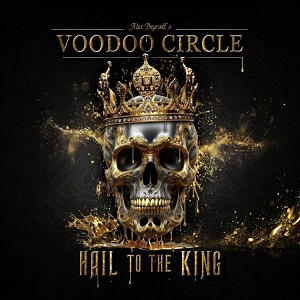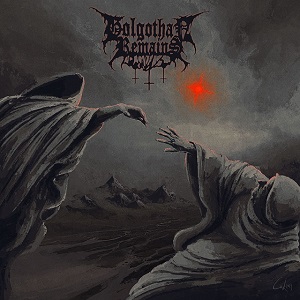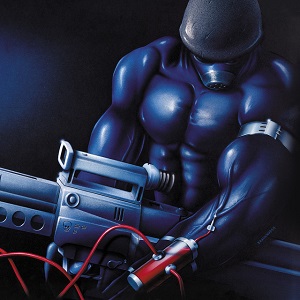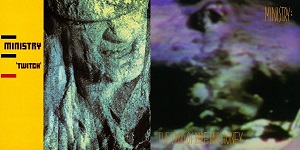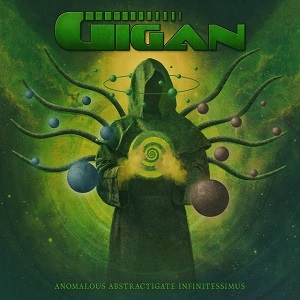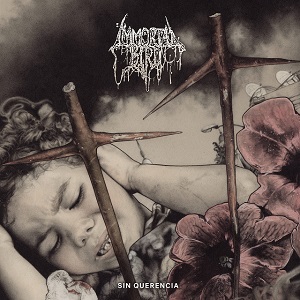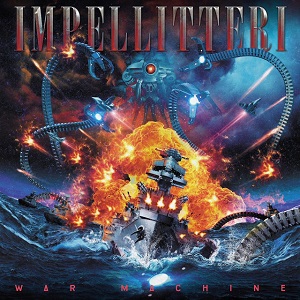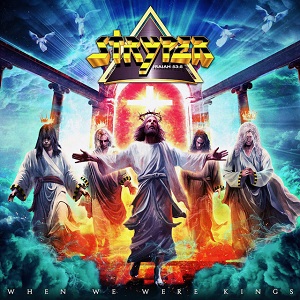TONY LEVIN To Release Bringing It Down To The Bass Album In September
August 16, 2024, 3 months ago
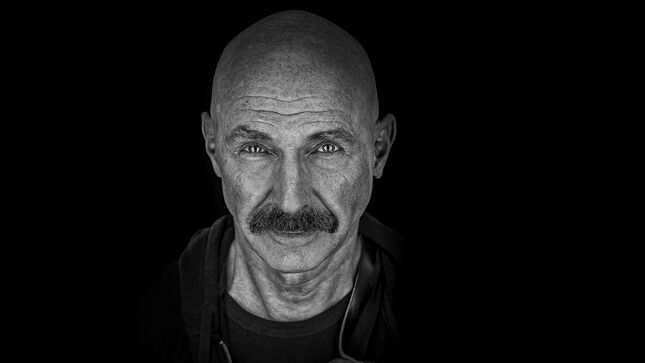
Tony Levin and Flatiron Recordings have announced a September 13 global release date for a new studio album, titled Bringing It Down To The Bass.
Today, they present the title track which can be previewed here. To pre-order the new album, click here.
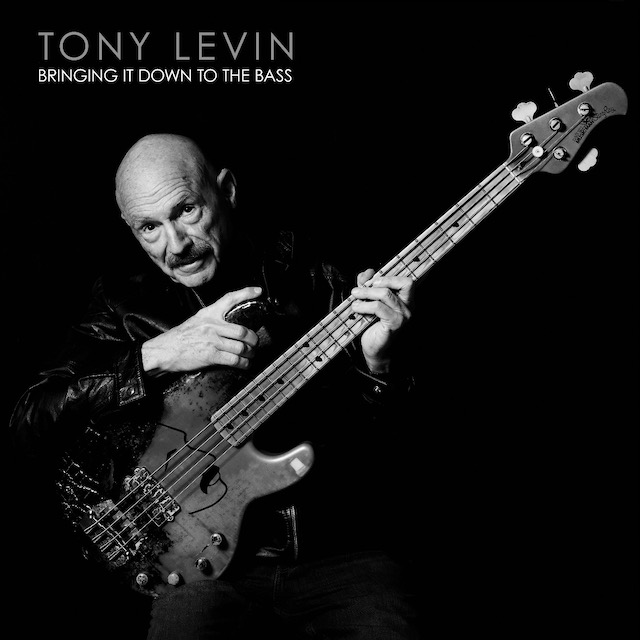
The album will be available on double vinyl, CD, Blu-ray and digital streaming. The Blu-ray will feature Dolby Atmos, DTS-HD 7.1/5.1 mixes and hi-res stereo audio. The Apple Music stream will be available in Immersive Audio / Dolby Atmos. Thiago Lima at Iguana Studios Toronto, Canada mixed the Atmos tracks.
Bringing It Down To The Bass has no shortage of wit and whimsy, and songs of power and profundity. Most are instrumental tracks, while a few feature vocals and spoken word. The sonic stew includes Prog, Jazz, Thrash, Classical, a whiff of barbershop quartet, and you won’t be sure what’s around the corner. And while it’s called Bringing It Down To The Bass – and that’s no lie - it’s not all about that bass. Levin’s seventh solo album, and his first since 2007, is an autobiography of sorts, with the themes drawn from Levin’s musical life. It features a myriad of collaborators from his half-century-plus on the road and in the studio with Peter Gabriel, King Crimson and many, many others.
“It could have been done a long time ago, frankly,” Levin says, of Bringing It Down To The Bass, “but it’s because of a problem I have, which is a very good problem to have. And that’s that I have a lot of touring and that’s what I love to do, playing live. It just didn’t give me much time at home to work on finishing the album that I’ve been working on for five or six years.”
“But,” he continues, “a year ago May, I looked at my schedule and saw a lot of touring with Peter Gabriel for almost a year and then in November, 2023, there was a Stick Men tour –and then in January a Levin Brothers tour – and I said to myself, ‘If I take March, April and May off from any live playing and maybe even any recording for other people and really focus on this, I can finally get this album out.’ It could have happened ten years before if I had the gumption to turn down tours.”
“I had pieces very much in the prog-rock vein and I had pieces that were based on the bass,” Levin says, “and somewhere around the middle of the record I made the difficult decision to toss the prog stuff – well, not toss it exactly, save it for another album – and the more I focused, I chose the kind of pieces that had to me a sense of unity to it in that it’s about the bass. Not songs with singing about the bass, but each song is either based on a bass riff or a bass technique that I then invited some great rhythm sections to play on.
“My basses do each sound different. I wanted to write at least one piece with the funk fingers and I did that fingernail way of playing that I featured on one piece, and hammer-on technique on that first piece, ‘Bringing It Down To The Bass.’ I used to use that a long time ago and I hadn’t used lately since I got the Stick, which is designed to play with the hammer-on technique. That’s also a piece that has a rocking, really hot rhythm section with Manu Katche, from Peter’s band on drums. Also, maybe two or three times in the piece it breaks down and stops to just the bass playing different riffs and then Dominic Miller, from Sting’s band, comes in and solos and Alex Foster solos on sax.”
The recording of “Road Dogs” began as an instrumental piece. He revisited a sound he’s used throughout his career, playing the fretless bass through a vocoder. The results were not what he was after so Levin’s approach was to try to sound like the bass through this tool. There was a vocal take that captured the undertones of his voice and that became the appropriate path to take. Lyrically, the song shares a glimpse in to life on the road, with the artist singing, “lighting & rigging & soundcheck & gigging, packing & loading & driving & roading … Trucking & bussing & rigging & trussing, fixing & tuning & mixing & crooning.”
The recording “Boston Rocks,” speaks musically and lyrically about the city he’s from. He shares a personal perspective there are two sides to the town. Levin offers, “It’s a rugged, rough town in a way, especially revolving around the sports teams. A lot of success nowadays, not so much when I was a kid growing up. Yet, it’s also home to universities and a rich history.” The performance begins with heavy rock and then segues to a more progressive style, delivering a B-section with the Chapman Stick. Lyrically, there is a poetic element in the delivery focused on the historic, more cultured side of Boston. Levin integrated several JFK quotes that emanated from speeches delivered in Boston. On drums, his bandmate from the Liquid Tension Experiment Mike Portnoy performed. And on guitar, Earl Slick contributed. Levin shares, “I love Earl Slick’s playing – we go back to John Lennon’s records and David Bowie stuff - and he really can rock out.” Levin shout-sings about Scollay Square (the old red-light district), Hah-vahd Yahd, the Garden, Fenway Park and Gillette Stadium, but also speaks this: “Born on the tide, midst the fens and reeds that wash and waver in still salted Back Bay, an audacious dream of a nation bound by common threads, fisherman and farmer, Yankee and immigrant, born to awaken the future that city upon a hill on which has never settled the dark dust of centuries.”
On “Floating in Dark Waters,” Robert Fripp donated one of his distinctive soundscapes to this moody instrumental. Levin explains, “I play sparse melody on the NS Electric Upright, and Jerry Marotta joins on percussion at the end. Way back when we toured with King Crimson a lot, there were a few tours this century where Robert would play a looping soundscape he would create before the show and the audience would hear it as they came in. He would make up a different one every day, maybe a half hour. Some nights when we were about ready to go at 8 – we always started at 8 - Robert said, ‘Tony, go out and play bass to my soundscape.’ These soundscapes were often atonal, but sometimes they were tonal. We played many on stage, every night for years and it occurred to me then that it would make a very interesting piece on an album, just bass and soundscape.”
The song “Fire Cross the Sky” has been with Tony Levin for decades. He wrote it in the 70s when he was residing on the Upper West Side of Manhattan. He frequented Café la Fortuna, and many days sat with his journal surrounded by a shrine to John Lennon with dozens of pictures on the wall. The poem was simply inspired by that setting. He reflects, “Once in a while, to write, especially journals or poetry writing, I need to get away from home, But I don’t like to do it on the road either, so I’ll make a trip somewhere and I’ll just go to cafes and write. I was on such a trip in Berlin for five days. I had the Stick with me and I was coming up with this very cool musical idea, which you hear in this song and somehow in the middle third of that, I was fiddling around with the chords and how I’m playing, it occurred to me what song would really fit well. Musically, it went into a quote from a classical guitar piece that I knew from a Paraguayan composer, Augustin Barrios, ‘Una limosna por el amor de dios.’ Usually, when I have those kinds of ideas, I’ll change it later or take it right out because I don’t want to be quoting a classical guitar piece, but it just seemed right and I thought that’s gonna stay. There are three elements to the song. I think it’s interesting harmonically; it’s an interesting Chapman Stick solo piece; and then when I attached it to the poem I wrote and I wanted to go into this beautiful melodic piece at the end.” In “Fire Cross the Sky,” Levin sings, “They could write his name in fire cross the sky, I wouldn’t mind / But it’s there inside his music I find the pieces of his soul he left behind.”
Over the course of Tony Levin’s career, he has collaborated with many of The World’s best drummers. With “On the Drums,” he acknowledges their footprint on his own career with an a capella male chorus. It starts with Jerry Marotta (repeated several times), and goes on to name check Ringo Starr, Carmine Appice, Nick Mason, Phil Collins, Steve Gadd (also repeated several times), Andy Newmark, Lenny White, four more Steves - Smith, Jordan, Ferrone and Martell - Bill Bruford (repeated several time), Billy Cobham, Mike Portnoy, Russ Kunkel, Manu Katche, Kenny Aronoff, Stewart Copeland, Rich Sullivan, Richie Heywood, ending appropriately (bookending, really) with Jerry Marotta’s brother, Rick Marotta. Listen for the nod to Queen’s “Bohemian Rhapsody” when Terry Bozzio pops up. Levin remembers, “During the lockdown year, there were pieces of paper all over my large studio. Little scraps of musical ideas of two drummers names who rhymed or who could fit somehow in the same kind of music, dozens of pieces of paper. Tying it together, that took a long time. And it was an act of love and respect. The only words aside from the drummers’ names are the last three words ‘on the drums.’”
The recording of “Me and My Axe” reunited Levin with several Peter Gabriel Band alumni, including Steve “the Deacon” Hunter on guitar, alongside Larry Fast and Jerry Marotta on drums.
The song “Espressoville” reunites the bassist with one of his oldest friends. He and Steve Gadd go back to being college friends and collaborators, long before the two became worldly renowned. It’s an instrumental composition, Steve Gadd on drums, and a horn section. It starts out (and ends) with his espresso machine grinding and growling. A notable fingernail style bass solo in the middle, and a strong Gadd-driven shout chorus at the end.
With “Give the Cello Some,” the NS electric cello is the centerpiece of this whimsical rocker. Levin’s brother Pete on organ with Jerry Marotta on drums.
Levin’s “Side B / Turn It Over” is in some respects his ode to the barbershop quartet. He offers, “I’ve always liked barbershop quartet – I love the harmony - and when I was a kid in Brookline High School I had a working barbershop quartet. We would actually sing the morning greeting on the PA system at school. I coaxed Peter Gabriel into using some barbershop arrangements on his first album and tour.”
Things change up after the “Side B” song. This almost classical instrumental “Beyond the Bass Clef” features L. Shankar (Shakti, Peter Gabriel) on violin, Gary Husband (from John McLaughlin’s The 4th Dimension) on keyboards, Colin Gatwood (from the Houston Symphony) on oboe and Levin on cello, bass and Stick.
With “Bungie Bass,” his performance emanates a rubber bass sound from the NS electric upright. He’s joined on this instrumental by David Torn (from Everyman Band) on guitar and Pat Mastelotto (from King Crimson) on drums.
Over the past half century, Tony Levin has been a prolific session player and one of the most active live performers on the planet. He’s contributed his talents to over five hundred albums amongst which include 15 with Peter Gabriel and 18 with King Crimson (counting live, studio, and compilations). Alongside contributions to the work of John Lennon, Alice Cooper, Lou Reed, Herbie Mann, Paul Simon and many others. On tour, he’s travelled the world many times over with the aforementioned King Crimson, Peter Gabriel, and several of his own bands including Stick Men. This fall, he’ll stage 65 performances in North America as a member of Beat, celebrating King Crimson’s 80’s repertoire alongside Adrian Belew, Steve Vai and Danny Carey interpreting Discipline, Beat and Three Of a Perfect Pair.

